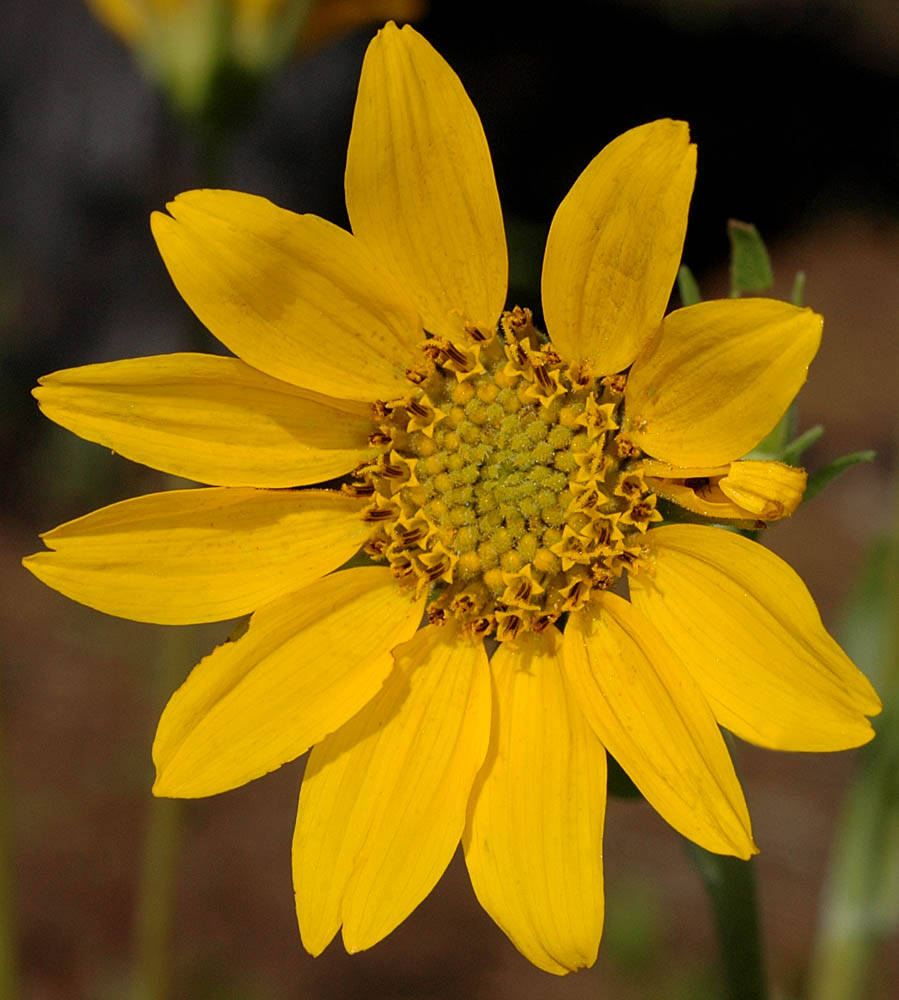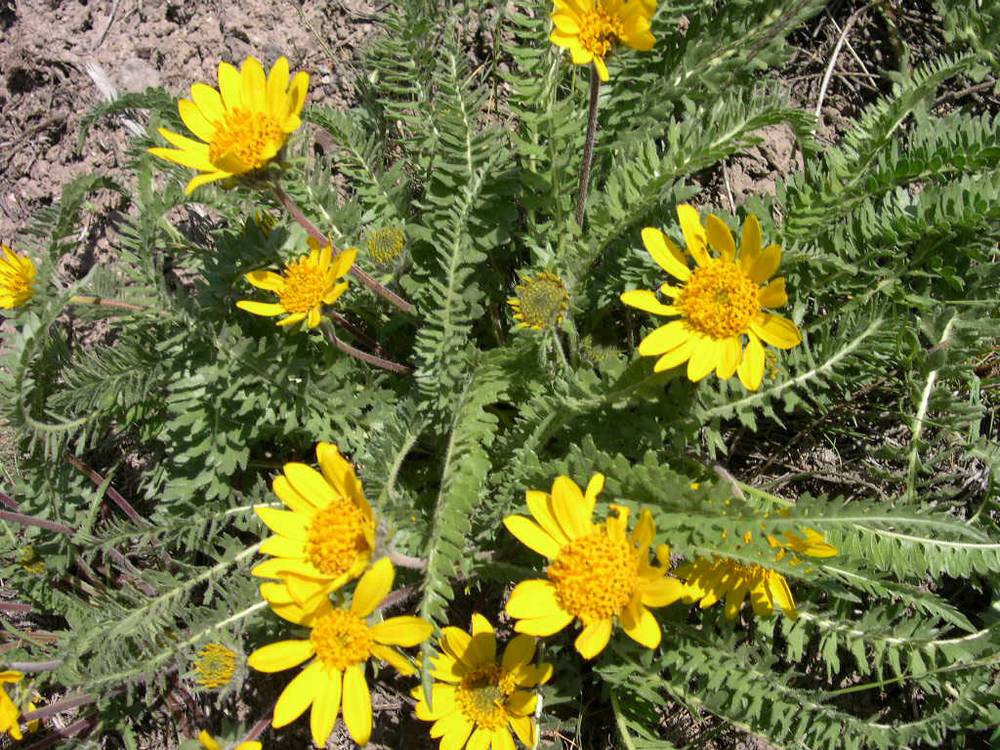Balsamorhiza careyana
Balsamorhiza hispidula
Carey's balsamroot
hispid balsamroot
forming clumps, 23–62 cm, green, sparsely villous-hirsute; more densely so below heads.
8–25 cm, villous-hirsute; from single taproot.
simple;
margins entire to slightly crenate;
surfaces hirsutulous to hirsute;
basal leaves in multiple rosettes;
blades deltate, 7–30 × 4.7–16 cm, bases cordate to hastate;
petioles 7.5–36 cm;
cauline proximal pair generally opposite, lanceolate;
distal alternate;
blades tapering at both ends, 2.5–8.2 × 0.4–2.8 cm;
petioles 0–7.5 cm.
ovate-lanceolate, 1-pinnately divided with pinnae again lobed, often with only a few lobes at tips or divided;
margins entire, ciliate;
surfaces hispid;
basal leaves in 1–few rosettes;
blades 5–18 × 3–7.5 cm;
pinnae 2–8 mm wide;
petioles 2–9 cm;
cauline leaves in one opposite pair;
blades 1.5–5 × 0.4–2 cm;
petioles 1.5–4 cm.
with 1 larger; terminal head and 1–6 smaller; axillary heads;
peduncles 0–20.5 cm.
with 1 terminal head.
terminal 9–15 × 15–25 mm; axillary 9–13 × 6–12 mm.
10–15 × 17–22 mm.
8–20 on large heads, 5–9 on small heads, yellow, persistent after drying;
rays 18–26 × 5–11 mm.
deciduous, 10–13, yellow;
rays 20–25 × 5–10 mm.
6.5–8.5 mm.
6–7 mm.
ovate-lanceolate, 8–34 × 4–7 mm; outer often tapered to caudate or with acuminate tips, villous to tomentose.
linear to lanceolate, 14–17 × 2–3 mm, with acuminate or caudate tips, ciliate, villous-hirsute.
5.5–7.5 × 2–2.5 mm, generally strigillose, sometimes glabrous.
6–7 mm, glabrous.
11–13 mm.
7–8 mm.
=38.
Balsamorhiza careyana
Balsamorhiza hispidula
Open areas, open pine woodlands. Flowering Apr–Jul. 0–1300 m. BW, Casc, Col, ECas, Lava. WA. Native.
Balsamorhiza careyana usually grows east of the Cascades but intergrades broadly with B. deltoidea in the Cascades and along the Columbia River. Pure B. careyana is easily distinguished by a combination of strigillose fruit, ray florets that are persistent after drying, and generally more heads per stem than B. deltoidea. Cascade specimens can be difficult to determine and have been separated as B. careyana var. intermedia in other treatments. The two species should perhaps be considered varieties of the same species.
Dry, often rocky, open areas. Flowering Apr–Jun. 800–1700 m. BR, BW, Owy. ID, NV; northeast to MT, east top WY, southeast to AZ. Native.
While B. hispidula is quite distinct from B. hookeri throughout most of its range, it intergrades completely with B. hookeri in Oregon. Although the two species have been kept separate in this treatment, most Oregon specimens of B. hispidula show some evidence of gene flow from B. hookeri. Balsamorhiza hispidula also hybridizes with B. sagittata. The specific epithet refers to the pubescence of the plants.
Abigail (Abby) Moore
Abigail (Abby) Moore





